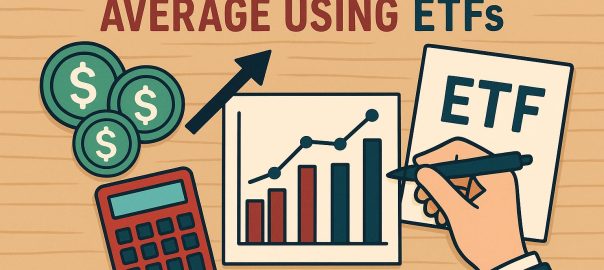Understanding Dollar-Cost Averaging
Dollar-cost averaging (DCA) is a systematic investment strategy that allows investors to consistently allocate a fixed sum of money into a particular investment, regardless of fluctuating market conditions. The crux of this method aims to minimize the risk associated with investing a lump sum amount at an inopportune moment when market conditions might be disadvantageous. This strategic approach is particularly useful in volatile markets where price variations are frequent, enabling investors to smoothen the effects of market ups and downs on their investments.
Benefits of Dollar-Cost Averaging
The primary advantage of dollar-cost averaging lies in its ability to reduce the impact of market volatility. By investing a set amount regularly, investors may purchase more shares when prices are low and fewer shares when prices are high, potentially resulting in a lower average cost per share over time. This tactic is particularly advantageous in unpredictable or highly volatile markets, where prices fluctuate frequently. Consequently, DCA offers a buffer against market volatility, safeguarding investors from the adverse effects of price swings, and can lead to beneficial outcomes over the long term.
Why Use ETFs?
Exchange-Traded Funds (ETFs) represent an optimal vehicle for implementing a dollar-cost averaging strategy. ETFs inherently offer diversification, as they invest in a diversified range of securities, which inherently mitigates risks compared to investing in individual stocks. Moreover, they are typically more cost-effective than certain mutual funds due to lower expense ratios. ETFs provide investors the opportunity to gain exposure to various asset classes or sectors without significant financial outlay, making them a preferred choice for many looking to leverage the benefits of DCA.
Implementing Dollar-Cost Averaging with ETFs
Investors interested in utilizing the dollar-cost averaging strategy with ETFs can follow a straightforward approach to get started. This involves a series of calculated steps designed to maximize returns while adhering to a disciplined investment routine.
Determine Your Investment Amount and Frequency
The first step in implementing DCA is to decide on the fixed amount to invest at regular intervals. This could be a modest sum such as $200 every month or every two weeks. The consistency of this investment is central to reaping the full benefits of DCA, as it ensures continuous participation in the market irrespective of its current state. This ongoing commitment can aid in building substantial investments over time.
Choose the Right ETFs
Subsequently, selecting the appropriate ETFs that align with one’s investment objectives and risk tolerance is pivotal. Investors should explore different categories of ETFs, such as those focusing on large-cap stocks, international markets, or specific industry sectors. The choice of ETFs should reflect the investor’s financial goals, time horizon, and comfort level with potential risks.
Set Up Automatic Investments
Automation is a key facet of successful DCA implementation, and many brokerage platforms offer features to set up automatic investments. This facility ensures that investments are systematically made in the chosen ETFs at predetermined intervals without requiring manual intervention. This not only aids in maintaining investment discipline but also eliminates the emotional biases that often affect investment decisions during market fluctuations.
Balancing Your Portfolio
Regular investment through DCA can contribute to maintaining a balanced portfolio over time. Investors should periodically review their portfolios to assess whether their ETF allocations are consistent with their broader investment strategy. Adjustments might be necessary to maintain the desired asset allocation, ensuring diversification and alignment with financial goals.
Risks and Considerations
Despite its advantages, dollar-cost averaging is not without potential downsides. In a market that consistently trends upwards, a lump-sum investment could potentially yield higher returns than a DCA approach, given the continuous rise in asset values. Additionally, the management fees associated with ETFs need to be considered, as they could impact overall returns. It is crucial for investors to weigh these considerations against the benefits of risk mitigation and peace of mind offered by DCA.
Tax Implications
The tax implications of regular investments should also be taken into account. Different tax rules may apply depending on whether investments are made in taxable or tax-advantaged accounts. These factors can affect the net returns realized from a dollar-cost averaging strategy, necessitating careful financial planning and possibly consultation with a tax advisor to optimize the strategy’s tax efficiency.
Final Thoughts
Adopting dollar-cost averaging with ETFs presents a well-rounded strategy for investors aiming to neutralize the adverse effects of market volatility. Through consistent investment over time, DCA can potentially optimize returns while offering the convenience of automated participation in the market. However, it remains imperative for investors to conduct comprehensive research or seek guidance from financial advisors to tailor a DCA approach that best suits their individual financial aspirations. By understanding the nuances of this strategy, investors can make informed decisions that contribute to achieving long-term financial security and growth.
This article was last updated on: August 29, 2025

